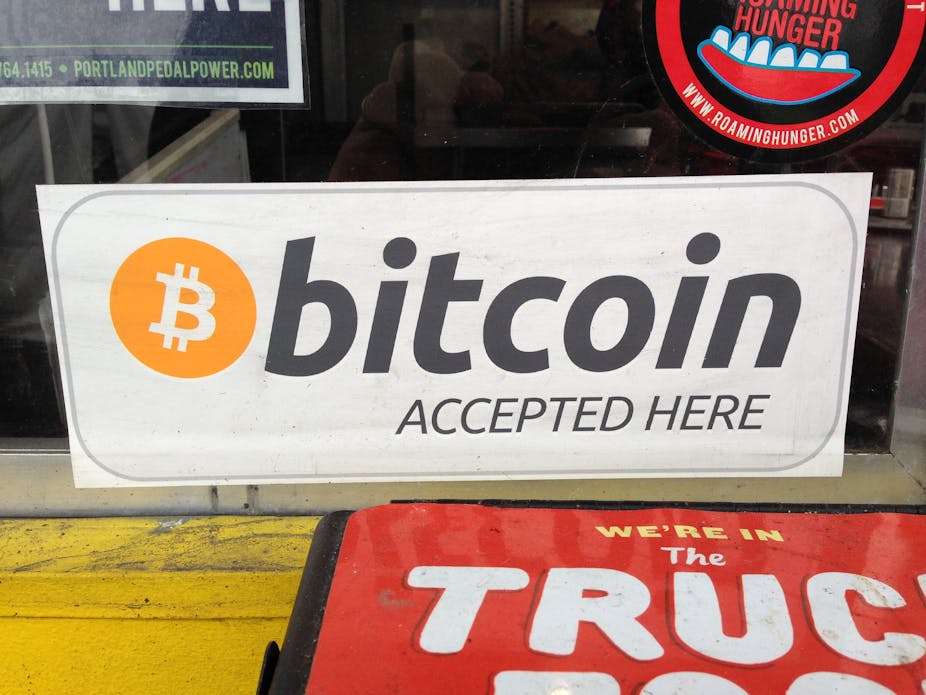The price of bitcoin has crashed to below US$290, its lowest since November 2013, and far below its all-time-high of US$1,242 later that same month. For about three hours the price sat below US$300.
This relatively mundane observation is actually merely the tip of the iceberg for bitcoin, the poster child of cryptocurrencies.
Bitcoin has been falling since its peak last year and during the past six months that slide has accelerated, pushed down by scandals such as the collapse of the major bitcoin exchange MtGox in February and then again in April following the delayed reaction and uncertainty.
The second fall can be seen in part as a result of bitcoin’s own success and increased recognition which equally opens markets up to smaller investors and the possibility of panic selling. Bitcoin recovered against the US dollar until August. Promises of fixes to prevent the perceived problems of bitcoin were presented that appear to have reassured the market with promises of more security for bitcoin virtual “wallets”, and better mechanism for funds transfers.
Ripple, for example, is a person-to-person money transfer system that recognises cryptocurrencies and automatically manages the complexity of exchange rates. But even the technical promise of Ripple was marred by the decision of its founder to sell his stake, causing the price to plummet.
Bitcoin comes of age
Applying some technical analysis to the situation shows a currency that was wildly overpriced during its climb to its peak in 2013 and then continued to be trading above the moving average in January, March and May and June of 2014.

However since early August it has been consistently undervalued, with the price meeting resistance and bouncing away from the lower price band three times. Similarly the price has become more volatile since mid-September, pointing to a lot of buying and selling based on taking a profit or minimising investors’ losses.

Its value is more than its worth
The causes for this decline are complex but three general themes are emerging. Bitcoin has truly reached the mainstream, with small investors buying into the currency with the hope of quick wins. The tendency then has been to pull the price downwards as currency trades become disconnected from the real capabilities or potential of bitcoin itself.
Taking this further, bitcoin the technology – the blockchain – is being confused with bitcoin, the traded currency. For example, the prospects of Ethereum which is based on the blockchain technology, are at best marginally linked to the traded price of the currency.
And finally, the emerging theme is that bitcoin is highly susceptible to the practices of high valuations of technology companies no matter how remote the linkage might between them.
Take a look at the record of bitcoin transactions since this latest prince tumble and you’ll see – in real time – that it’s business as usual. This is a reminder that bitcoin is a currency with practical uses and one that people will continue to use while there are sellers prepared to accept it. Its value in relation to other currencies, so long as it is known, isn’t relevant. There is no shortage of actual, state-backed fiat currencies around the world that face regular fluctuations in value – but still business must, and does, carry on.

